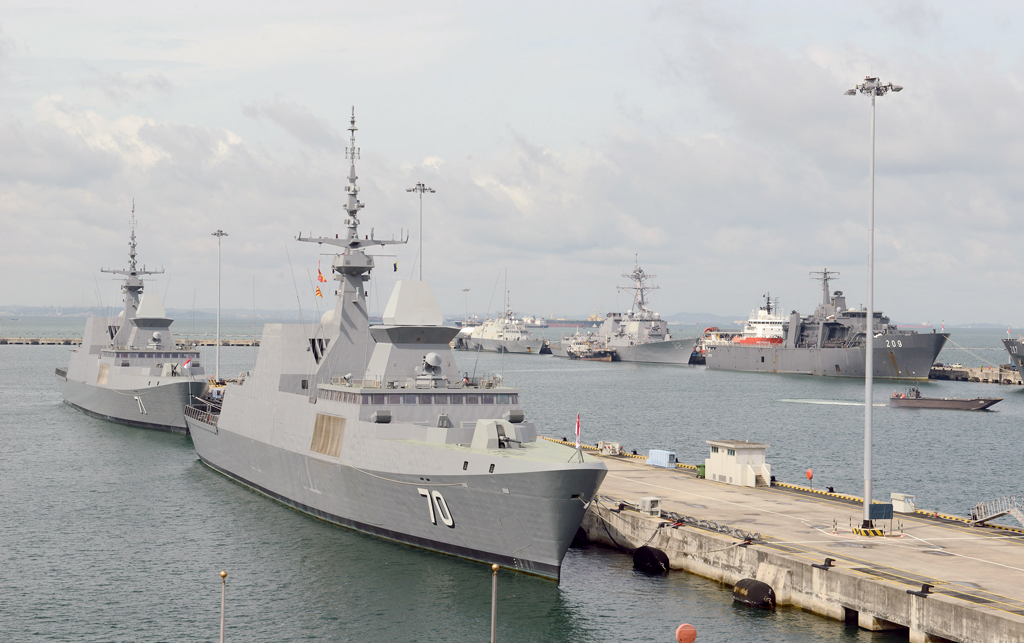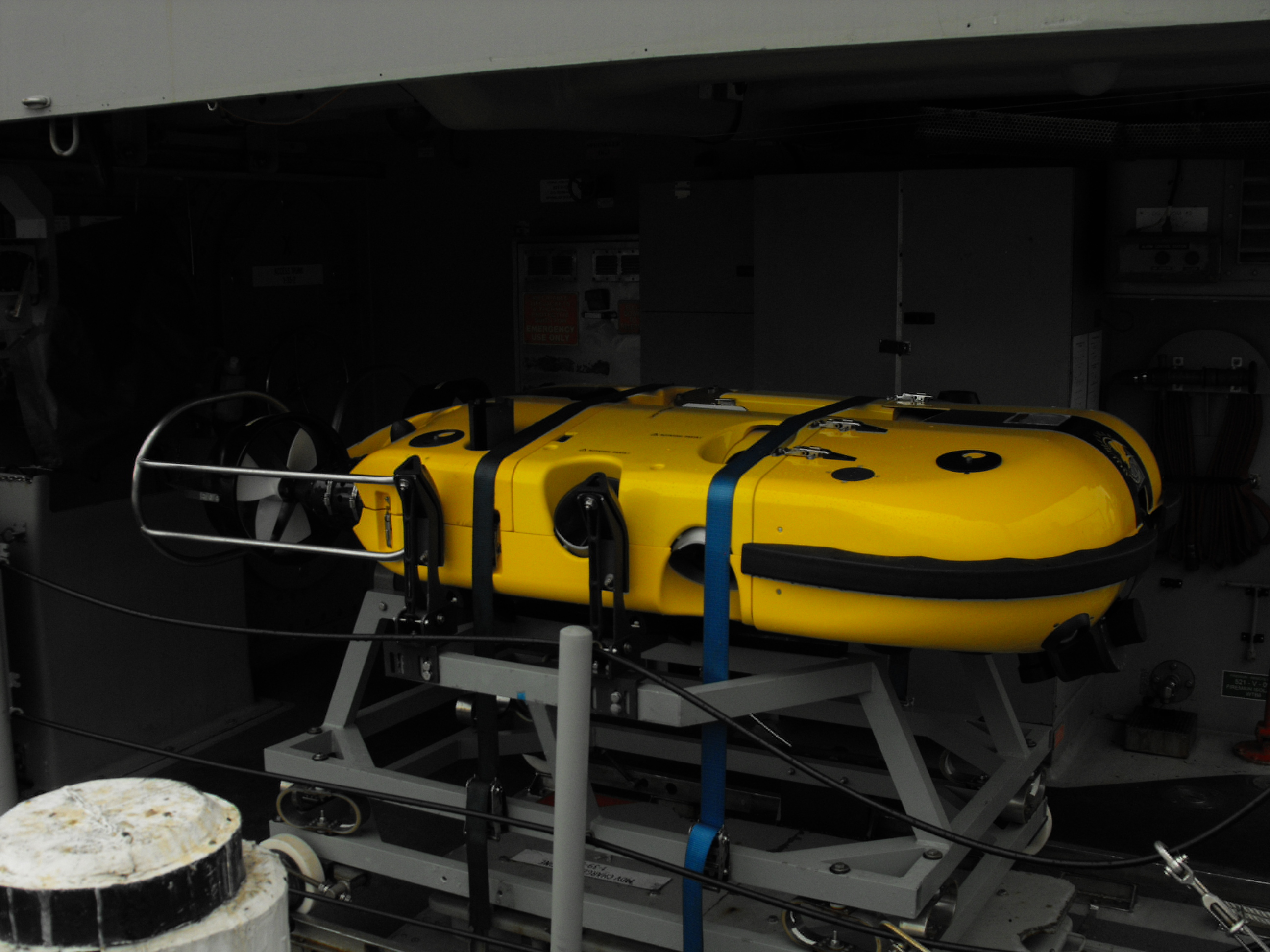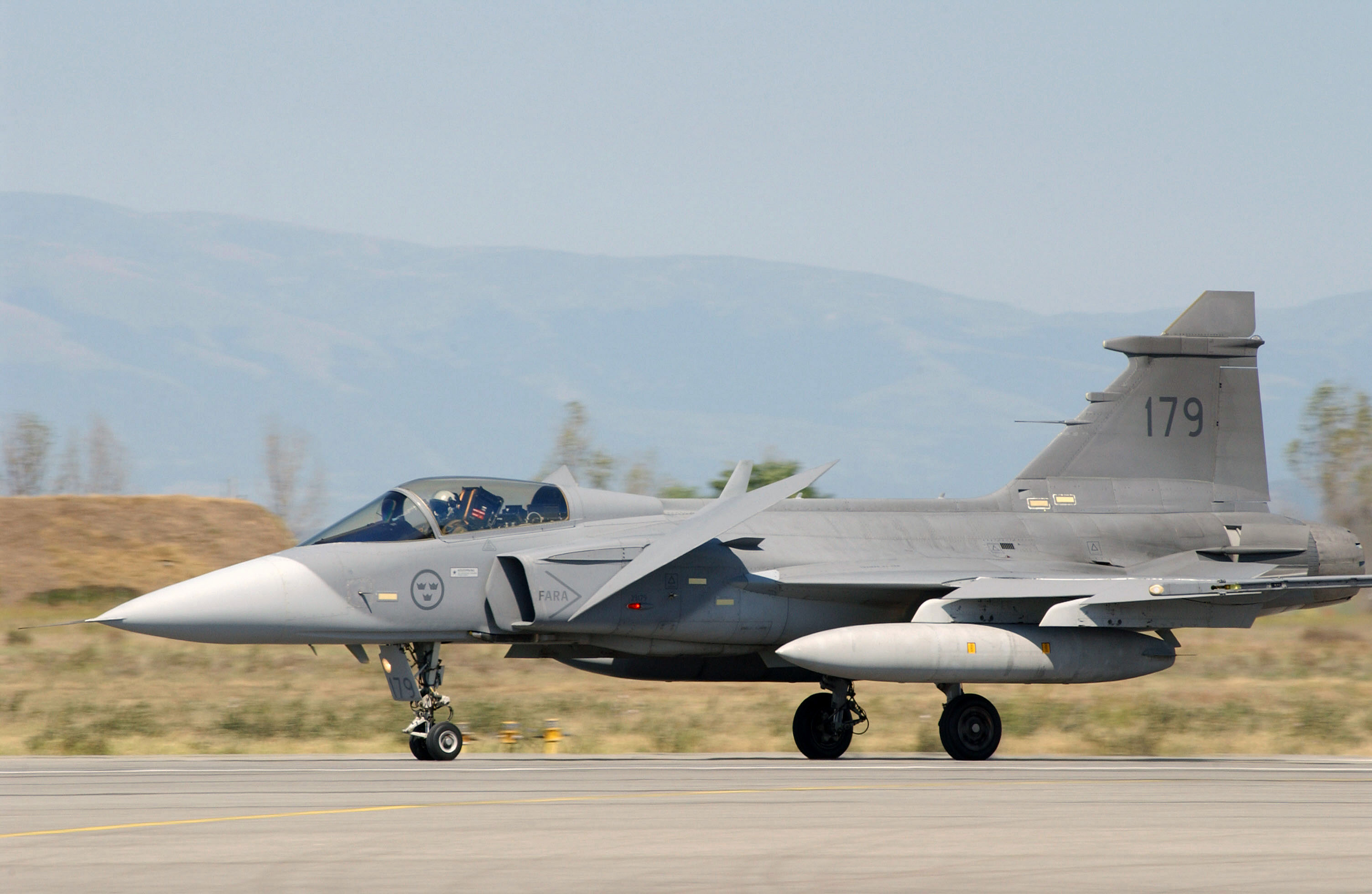|
Landsort Class Mine Countermeasures Vessel
The ''Landsort'' class mine countermeasures vessel were built by Swedish shipbuilding company, Kockums (formerly Karlskronavarvet) for the Swedish Navy and the Republic of Singapore Navy (RSN) between 1983 and 1996. Design As a mine countermeasure vessel, the hull is made out of glass-reinforced plastic in order to lower acoustic and magnetic signatures, as well as provide improved shock resistance to underwater explosions. The ''Landsort'' class is equipped for mine sweeping with both conventional mechanical sweeping gear as well as electric and acoustic sweep systems. Mine hunting capability is provided by remotely operated vehicles (ROVs) from Saab Underwater Systems, such as the Double Eagle. ''Bedok'' Class The of the Republic of Singapore Navy is configured with the Thomson-CSF TSM 2061 Mk II mine hunting and mine disposal system, Thomson-CSF TSM 2022 hull-mounted high frequency sonar, two ECA PAP 104 Mk 5 ROVs, Signaal WM20 director, Norcontrol DB2000 navigation radar an ... [...More Info...] [...Related Items...] OR: [Wikipedia] [Google] [Baidu] |
Changi Naval Base
Changi Naval Base (CNB), officially known as the RSS ''Singapura'' – Changi Naval Base, is a naval base of the Republic of Singapore Navy (RSN). Located about 1.5 kilometres east of Changi Air Base (East) and 3.5 kilometres east of Singapore Changi Airport, the base was built on 1.28 km² (0.50 sq mi) of reclaimed land. It was officially opened on 21 May 2004 by then Prime Minister of Singapore, Goh Chok Tong. A Navy Museum was opened at the entrance of the base in 2012. Overview Its 6.2 km (3.9 mi) berthing space can accommodate an aircraft carrier and is often used by visiting ships of the Royal Navy as part of the Five Power Defence Arrangements (FPDA) and United States Navy, as a result of the signing of the addendum to the 1990 United States–Singapore Memorandum of Understanding on 10 November 1990, which formalised arrangements for US Navy ships to use CNB facilities. ''The Straits Times'' stated in an editorial that: In 2017, India and Si ... [...More Info...] [...Related Items...] OR: [Wikipedia] [Google] [Baidu] |
Double Eagle (mine Disposal Vehicle)
The Double Eagle is a remotely operated vehicle (ROV) built by the Swedish defence company Saab Underwater Systems AB and used for the disposal of naval mines. Design As of 2009, four versions of the ROV have been designed.Fletcher, ''Worldwide Undersea MCM Vehicle Technologies''Fish & Hollosi, ''Demining the deep'' The original version was named the Sea Eagle, and was a militarised variant of the civilian Sea Owl ROV. This unit was long, wide, and high, could travel at , and dive to . These ROVs saw service with the Swedish Navy from 1984 onwards. The second version, named the Double Eagle, is larger, measuring in length, in width, and in height. The ROV weighs , can dive to , and travel at . Current models The Double Eagle Mark II is larger but lighter than the first Double Eagle. Measuring long, wide, and high, the unit weighs , dives to , and can reach . The Mark II entered service in 1994. The Mark III is longer and heavier than its predecessor. The ROV's payl ... [...More Info...] [...Related Items...] OR: [Wikipedia] [Google] [Baidu] |
Mine Warfare Vessel Classes
Mine, mines, miners or mining may refer to: Extraction or digging *Miner, a person engaged in mining or digging *Mining, extraction of mineral resources from the ground through a mine Grammar *Mine, a first-person English possessive pronoun Military * Anti-tank mine, a land mine made for use against armored vehicles * Antipersonnel mine, a land mine targeting people walking around, either with explosives or poison gas * Bangalore mine, colloquial name for the Bangalore torpedo, a man-portable explosive device for clearing a path through wire obstacles and land mines * Cluster bomb, an aerial bomb which releases many small submunitions, which often act as mines * Land mine, explosive mines placed under or on the ground * Mining (military), digging under a fortified military position to penetrate its defenses * Naval mine, or sea mine, a mine at sea, either floating or on the sea bed, often dropped via parachute from aircraft, or otherwise lain by surface ships or submarines * Pa ... [...More Info...] [...Related Items...] OR: [Wikipedia] [Google] [Baidu] |
Bedok Class Mine Countermeasures Vessel
The ''Bedok'' class are mine countermeasures vessels of the Republic of Singapore Navy (RSN). They play an important role in the maritime security of Singapore, ensuring that the Singapore Strait and the sea lanes surrounding Singapore remain mine-free and open to international shipping. It is estimated that closure of Singapore's ports would result in direct trade losses amounting to more than US$1.2 billion daily, posing a serious threat to Singapore's economy. The four ships form the Sixth Flotilla of the RSN. Planning and acquisition The RSN first acquired mine countermeasures capabilities in 1975, when the United States Navy's and were re-activated by the RSN's engineers and technicians in California. These s were commissioned as RSS ''Jupiter'' and RSS ''Mercury'' respectively. RSS ''Jupiter'' was scrapped on 15 August 1986 and RSS ''Mercury'' was decommissioned on 31 March 1993. The need for modern minehunting vessels saw Singapore entering into an agreement with Swede ... [...More Info...] [...Related Items...] OR: [Wikipedia] [Google] [Baidu] |
Koster-class Mine Countermeasures Vessel
The ''Koster'' class is a class of five mine-countermeasure vessels currently in use by the Swedish Navy. Built between 1982 and 1993 as part of the seven-strong s, the last five ships of the class were given a comprehensive midlife upgrade between 2007 and 2010, which resulted in HMS ''Koster'' becoming the lead ship of the newly upgraded class of MCMVs. After the upgrade, the Swedish Navy expects that it will serve on for another 15 to 20 years. An identifying feature of the ''Koster'' class is the fire control radar on top of the bridge. Overview In December 2004, the Swedish Navy awarded Kockums a contract for the mid-life upgrade for five of the ''Landsort'' class (excluding HMS ''Landsort'' and HMS ''Arholma''). The upgrade includes a new mine countermeasures (MCM) system, adaptations for international operations as well as a new air defence systems involving moving and modification of the Arte 726 from the ''Kaparen'' class fast patrol boats. The first is expected to be comp ... [...More Info...] [...Related Items...] OR: [Wikipedia] [Google] [Baidu] |
Bedok-class Mine Countermeasures Vessel
The ''Bedok'' class are mine countermeasures vessels of the Republic of Singapore Navy (RSN). They play an important role in the maritime security of Singapore, ensuring that the Singapore Strait and the sea lanes surrounding Singapore remain mine-free and open to international shipping. It is estimated that closure of Singapore's ports would result in direct trade losses amounting to more than US$1.2 billion daily, posing a serious threat to Singapore's economy. The four ships form the Sixth Flotilla of the RSN. Planning and acquisition The RSN first acquired mine countermeasures capabilities in 1975, when the United States Navy's and were re-activated by the RSN's engineers and technicians in California. These s were commissioned as RSS ''Jupiter'' and RSS ''Mercury'' respectively. RSS ''Jupiter'' was scrapped on 15 August 1986 and RSS ''Mercury'' was decommissioned on 31 March 1993. The need for modern minehunting vessels saw Singapore entering into an agreement with Swede ... [...More Info...] [...Related Items...] OR: [Wikipedia] [Google] [Baidu] |
Link 16
Link 16 is a military tactical data link network used by NATO and nations allowed by the MIDS International Program Office (IPO). Its specification is part of the family of Tactical Data Links. With Link 16, military aircraft as well as ships and ground forces may exchange their tactical picture in near-real time. Link 16 also supports the exchange of text messages, imagery data and provides two channels of digital voice (2.4 kbit/s or 16 kbit/s in any combination). Link 16 is defined as one of the digital services of the JTIDS / MIDS in NATO's '' Standardization Agreement'' STANAG 5516. MIL-STD-6016 is the related United States Department of Defense Link 16 MIL-STD. Technical characteristics Link 16 is a TDMA-based secure, jam-resistant, high-speed digital data link which operates in the radio frequency band 960–1,215 MHz, allocated in line with the International Telecommunication Union (ITU) Radio regulations to the ''aeronautical radionavigation'' servi ... [...More Info...] [...Related Items...] OR: [Wikipedia] [Google] [Baidu] |
Atlas Elektronik
Atlas Elektronik is a naval/marine electronics and systems business based in Bremen, Germany. It is involved in the development of integrated sonar systems for submarines and heavyweight torpedoes. The company was a subsidiary of BAE Systems until December 2005, when it was sold to ThyssenKrupp and EADS. Atlas Elektronik became a wholly owned subsidiary of ThyssenKrupp Marine Systems in 2017. History Early history The company was founded in 1902 as ''Norddeutsche Maschinen- und Armaturenfabrik GmbH'', focusing on shipbuilding and naval engineering services. Its name was changed in 1911 to ''Atlas Werke AG'', the origin of its modern-day name. During the First World War, Atlas Werke built U-boats for the Imperial German Navy. After the war, the company shrank in size and began to focus on civilian technology, due to restrictions imposed by the Treaty of Versailles. Following the Nazi seizure of power, the company grew to become an arms supplier for the Kriegsmarine. ... [...More Info...] [...Related Items...] OR: [Wikipedia] [Google] [Baidu] |
Cuxhaven 2009 -HMS Ulvön -M77- (Ship 1992) By RaBoe 001
Cuxhaven (; ) is an independent town and seat of the Cuxhaven district, in Lower Saxony, Germany. The town includes the northernmost point of Lower Saxony. It is situated on the shore of the North Sea at the mouth of the Elbe River. Cuxhaven has a footprint of (east–west) by (north–south). Its town quarters Duhnen, Döse and Sahlenburg are especially popular vacation spots on the North Sea and home to about 52,000 residents. Cuxhaven is home to an important fisherman's wharf and ship registration point for Hamburg as well as the Kiel Canal until 2008. Tourism is also of great importance. The city and its precursor Ritzebüttel belonged to Hamburg from the 13th century until 1937. The island of Neuwerk, a Hamburg dependency, is located just northwest of Cuxhaven in the North Sea. The city's symbol, known as the Kugelbake, is a beacon once used as a lighthouse; the wooden landmark on the mouth of the Elbe marks the boundary between the river and the North Sea and also adorns ... [...More Info...] [...Related Items...] OR: [Wikipedia] [Google] [Baidu] |
Saab Group
Saab AB (originally , later just SAAB and Saab Group) is a Swedish aerospace and defence company, founded in 1937. Headquartered in Stockholm, the development and the manufacturing is undertaken in Linköping. Saab produced automobiles from 1947 until 1990 when the automobile division was spun off as Saab Automobile, a joint venture with General Motors. The joint venture ended in 2000 when GM took complete ownership. From 1968 onwards the company was in a merger with commercial vehicle manufacturer Scania-Vabis, known as Saab-Scania. The two were de-merged in 1995 by the new owners, Investor AB. Despite the demerger, both Saab and Scania share the right to use the griffin logo, which originates from the coat of arms of the Swedish region of Scania. History "Svenska Aeroplan AktieBolag" (Swedish for "Swedish Aeroplane Company Limited") (SAAB) was founded in 1937 in Trollhättan, with the merger of Svenska Aero AB (SAAB) and Linköping based ASJA the headquarters moved to Linkö ... [...More Info...] [...Related Items...] OR: [Wikipedia] [Google] [Baidu] |
Voith Schneider Propeller
The Voith Schneider Propeller (VSP) is a specialized marine propulsion system (MPS) manufactured by the Voith Group based on a cyclorotor design. It is highly maneuverable, being able to change the direction of its thrust almost instantaneously. It is widely used on tugs and ferries. Operation From a circular plate, rotating around a vertical axis, a circular array of vertical blades (in the shape of hydrofoils) protrude out of the bottom of the ship. Each blade can rotate itself around a vertical axis. The internal gear changes the angle of attack of the blades in sync with the rotation of the plate, so that each blade can provide thrust in any direction. Unlike the azimuth thruster (where a conventional propeller is rotated about the vertical axis to direct its thrust, allowing a vessel to steer without the use of a rudder), the Voith-Schneider drive merely requires changing the pattern of orientation of the vertical blades. In a marine situation, this provides for a drive ... [...More Info...] [...Related Items...] OR: [Wikipedia] [Google] [Baidu] |
Remotely Operated Vehicle
A remotely operated underwater vehicle (technically ROUV or just ROV) is a tethered underwater mobile device, commonly called ''underwater robot''. Definition This meaning is different from remote control vehicles operating on land or in the air. ROVs are unoccupied, usually highly maneuverable, and operated by a crew either aboard a vessel/floating platform or on proximate land. They are common in deepwater industries such as offshore hydrocarbon extraction. They are linked to a host ship by a neutrally buoyant tether or, often when working in rough conditions or in deeper water, a load-carrying umbilical cable is used along with a tether management system (TMS). The TMS is either a garage-like device which contains the ROV during lowering through the splash zone or, on larger work-class ROVs, a separate assembly which sits on top of the ROV. The purpose of the TMS is to lengthen and shorten the tether so the effect of cable drag where there are underwater currents is minimize ... [...More Info...] [...Related Items...] OR: [Wikipedia] [Google] [Baidu] |
_by_RaBoe_001.jpg)




